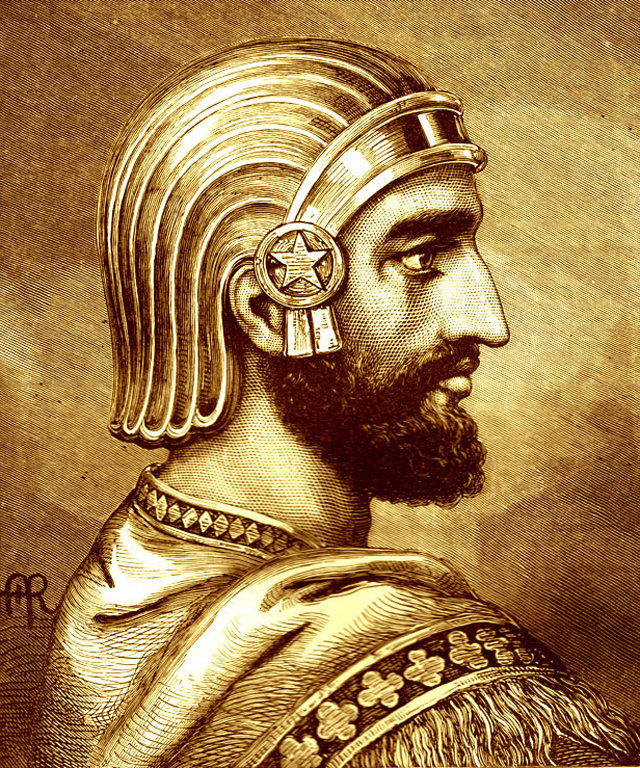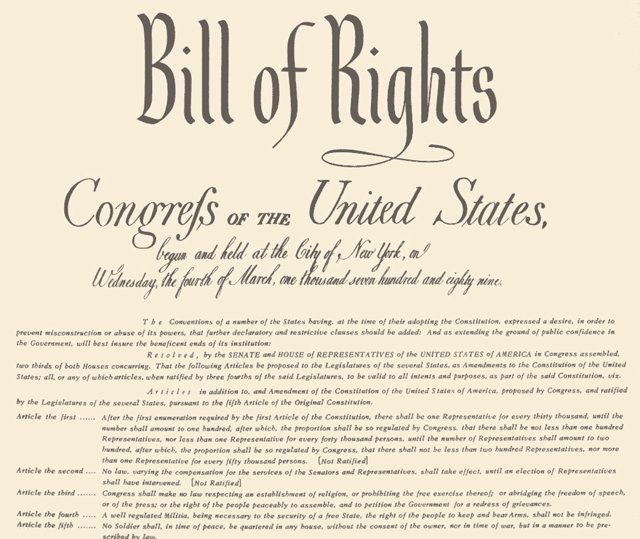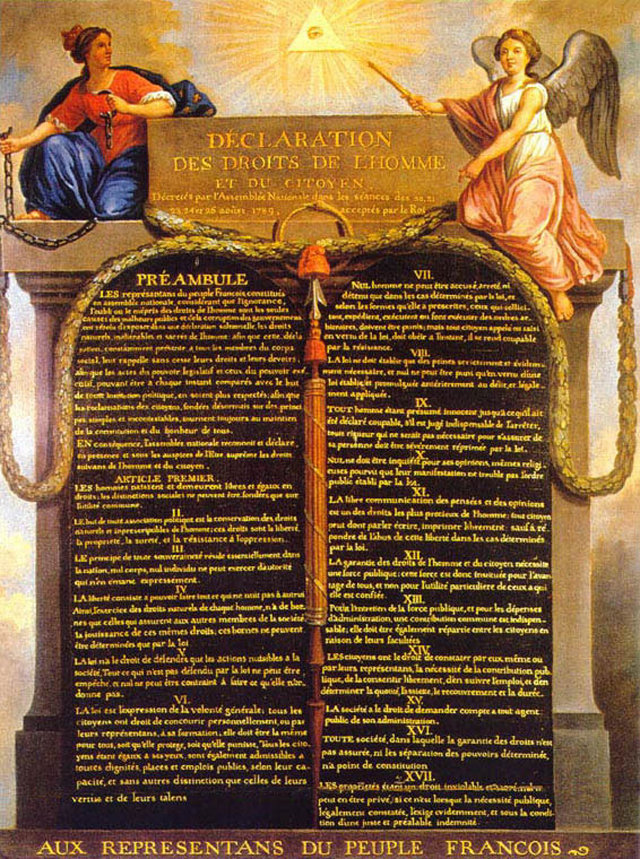The Background of Human Rights
The Cyrus Cylinder (539 B.C.)

In 539 B.C., the armies of Cyrus the Great, the first king of ancient Persia, conquered the city of Babylon. But it was his next actions that marked a major advance for Man. He freed the slaves, declared that all people had the right to choose their own religion, and established racial equality. These and other decrees were recorded on a baked-clay cylinder in the Akkadian language with cuneiform script.
Known today as the Cyrus Cylinder, this ancient record has now been recognized as the world’s first charter of human rights. It is translated into all six official languages of the United Nations and its provisions parallel the first four Articles of the Universal Declaration of Human Rights.
The Spread of Human Rights

From Babylon, the idea of human rights spread quickly to India, Greece and eventually Rome. There the concept of “natural law” arose, in observation of the fact that people tended to follow certain unwritten laws in the course of life, and Roman law was based on rational ideas derived from the nature of things.
Documents asserting individual rights, such as the Magna Carta (1215), the Petition of Right (1628), the US Constitution (1787), the French Declaration of the Rights of Man and of the Citizen (1789), and the US Bill of Rights (1791) are the written precursors to many of today’s human rights documents.
The Magna Carta (1215)

In 1215, after King John of England violated a number of ancient laws and customs by which England had been governed, his subjects forced him to sign the Magna Carta, which enumerates what later came to be thought of as human rights. Among them was the right of the church to be free from governmental interference, the rights of all free citizens to own and inherit property and to be protected from excessive taxes. It established the right of widows who owned property to choose not to remarry, and established principles of due process and equality before the law. It also contained provisions forbidding bribery and official misconduct.
Widely viewed as one of the most important legal documents in the development of modern democracy, the Magna Carta was a crucial turning point in the struggle to establish freedom.
Petition of Right (1628)

United States Declaration of Independence (1776)

On July 4, 1776, the United States Congress approved the Declaration of Independence. Its primary author, Thomas Jefferson, wrote the Declaration as a formal explanation of why Congress had voted on July 2 to declare independence from Great Britain, more than a year after the outbreak of the American Revolutionary War, and as a statement announcing that the thirteen American Colonies were no longer a part of the British Empire. Congress issued the Declaration of Independence in several forms. It was initially published as a printed broadsheet that was widely distributed and read to the public.
Philosophically, the Declaration stressed two themes: individual rights and the right of revolution. These ideas became widely held by Americans and spread internationally as well, influencing in particular the French Revolution.
The Constitution of the United States of America (1787) and Bill of Rights (1791)

Written during the summer of 1787 in Philadelphia, the Constitution of the United States of America is the fundamental law of the US federal system of government and the landmark document of the Western world. It is the oldest written national constitution in use and defines the principal organs of government and their jurisdictions and the basic rights of citizens.
The first ten amendments to the Constitution—the Bill of Rights—came into effect on December 15, 1791, limiting the powers of the federal government of the United States and protecting the rights of all citizens, residents and visitors in American territory.
The Bill of Rights protects freedom of speech, freedom of religion, the right to keep and bear arms, the freedom of assembly and the freedom to petition. It also prohibits unreasonable search and seizure, cruel and unusual punishment and compelled self-incrimination. Among the legal protections it affords, the Bill of Rights prohibits Congress from making any law respecting establishment of religion and prohibits the federal government from depriving any person of life, liberty or property without due process of law. In federal criminal cases it requires indictment by a grand jury for any capital offense, or infamous crime, guarantees a speedy public trial with an impartial jury in the district in which the crime occurred, and prohibits double jeopardy.
Declaration of the Rights of Man and of the Citizen (1789)

In 1789 the people of France brought about the abolishment of the absolute monarchy and set the stage for the establishment of the first French Republic. Just six weeks after the storming of the Bastille, and barely three weeks after the abolition of feudalism, the Declaration of the Rights of Man and of the Citizen (French: La Déclaration des Droits de l’Homme et du Citoyen) was adopted by the National Constituent Assembly as the first step toward writing a constitution for the Republic of France.
The Declaration proclaims that all citizens are to be guaranteed the rights of “liberty, property, security, and resistance to oppression.” It argues that the need for law derives from the fact that “...the exercise of the natural rights of each man has only those borders which assure other members of the society the enjoyment of these same rights.” Thus, the Declaration sees law as an “expression of the general will,“ intended to promote this equality of rights and to forbid “only actions harmful to the society.”
The First Geneva Convention (1864)

The main principles laid down in the Convention and maintained by the later Geneva Conventions provided for the obligation to extend care without discrimination to wounded and sick military personnel and respect for and marking of medical personnel transports and equipment with the distinctive sign of the red cross on a white background.

